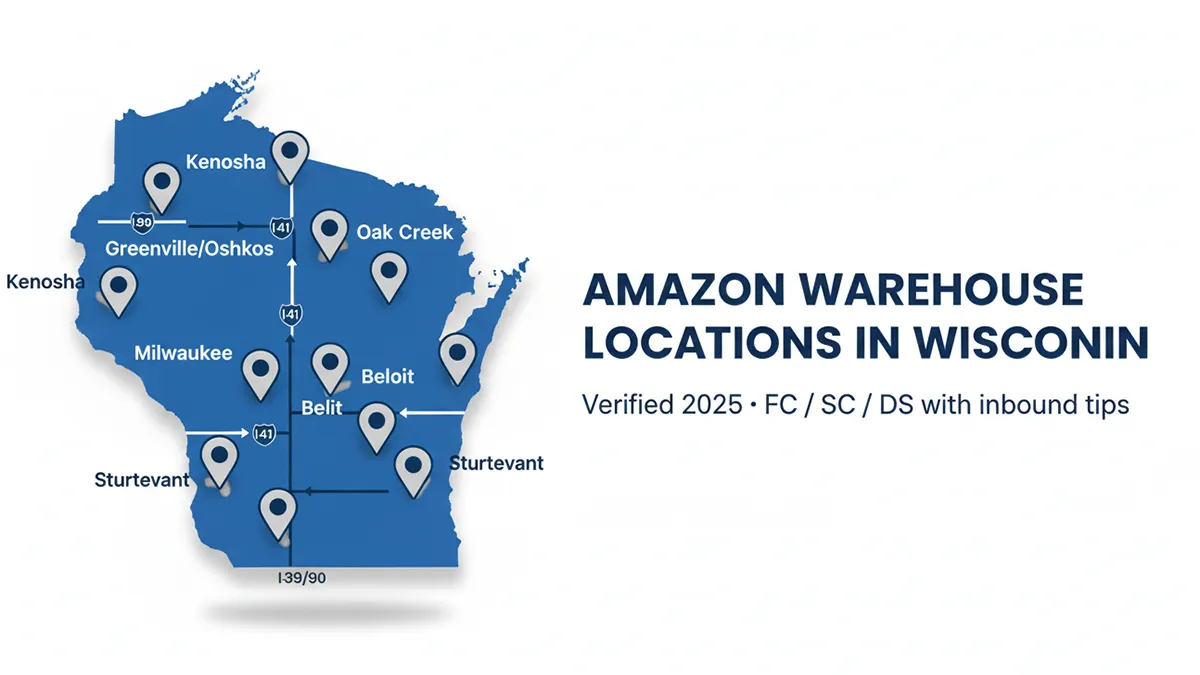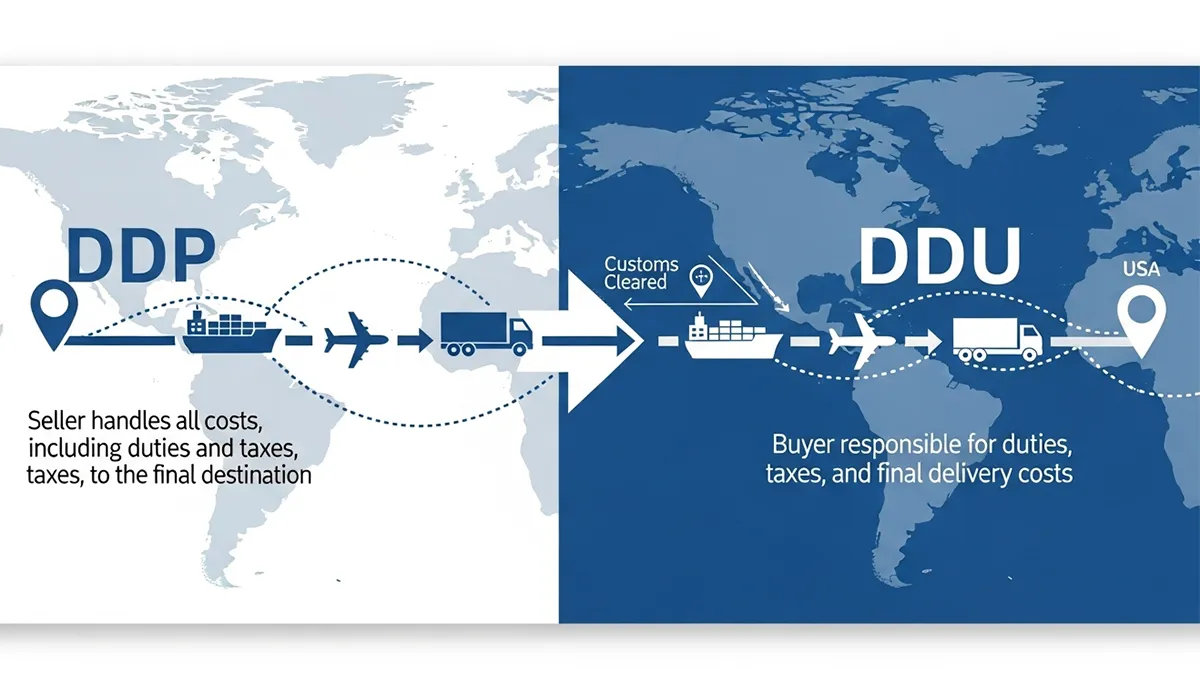2025 US Customs Clearance Guide: Process & Advanced Terms
Worried your international shipment might get stuck at the border? Understanding the customs clearance process is the key to smooth, hassle-free importing. Whether you're a business expecting large cargo or an individual tracking a package, every item entering the United States must go through US customs clearance.
This guide breaks down exactly what customs clearance means, the steps involved, and the key terminology you need to know.
What is Customs Clearance?
Simply put, customs clearance is the official process of getting goods across an international border. It involves preparing and submitting required documents to a country's customs authority (in the U.S., this is the Customs and Border Protection, or CBP). The customs clearance meaning is straightforward: it is the act of receiving official permission to either import or export goods.
Until a shipment has cleared customs, it cannot be legally released to its final destination.
The Key Players: Who is Involved?
Two roles are essential in the customs process:
-
Customs Broker: For most businesses, the key to a seamless customs clearance procedure is a customs broker (or customs clearance agent). They are licensed professionals authorized by U.S. CBP to act on behalf of importers, manage documentation, and ensure compliance.
-
Consignee: This is the party receiving the goods. For shipments imported into the U.S., the consignee must have a U.S. address. If you are a Foreign Importer of Record, you must list a U.S.-based business to act as the consignee.
The 4 Key Steps of the Customs Clearance Process
While it may seem complex, the U.S. customs clearance process can be broken down into four main steps. Knowing these helps you understand tracking updates like "import customs clearance completed."
Step 1: Customs Officer Verifies Paperwork
The first step begins when your shipment arrives. A CBP officer will review the documentation. Accuracy is critical. Key documents include a Commercial Invoice, Packing List, and Bill of Lading/Air Waybill.
Step 2: Calculation of Duties & Taxes
The CBP officer calculates any applicable import duties and taxes based on the product's HTS Code, value, and country of origin.
Step 3: Paying Duties and Taxes
If duties are owed, they must be paid. A customs broker typically handles this payment. The responsibility for payment depends on the shipping terms (Incoterms) agreed upon, such as DDP (Delivered Duty Paid) or DDU (Delivered Duty Unpaid).
Step 4: Shipment is Released from Customs
After all documents are verified and duties are paid, the shipment receives the status: customs clearance completed. CBP then releases the goods to your domestic carrier for final delivery.
U.S. Customs Surety Bonds: A Necessary Guarantee
For any commercial import customs clearance in the U.S. with goods valued at $800 or more, a U.S. Customs Surety Bond is required. This bond acts as an insurance policy for the U.S. government, guaranteeing that all duties and fees will be paid.
-
Single-Entry Bond: Best for one-time or infrequent imports.
-
Continuous Bond: An annual bond that is more cost-effective for businesses that ship frequently.
A Deeper Dive: Advanced Customs Concepts & Terminology
For importers who want to understand the process more deeply, here are some professional terms you may encounter:
1. CBP Forms: Understanding a CF-28 and CF-29
Occasionally, CBP may need more information or identify an issue with your entry.
-
CF-28 (Request for Information): This is not a penalty. It means CBP is requesting additional details or documents to verify your entry, such as a Free Trade Agreement Certificate of Origin.
-
CF-29 (Notice of Action): This is a more formal notice indicating that CBP has taken action on your entry, such as changing a tariff classification or value, which may result in higher duties. You typically have 20 days to respond if you wish to dispute the action.
2. Filing & Data Systems: RLF, EDI, and ACE Explained
Modern customs brokerage relies on sophisticated electronic systems.
-
ACE (Automated Commercial Environment): This is the primary system used by the U.S. government for processing imports and exports. It provides a "single window" for trade data, eliminating paperwork and improving efficiency.
-
EDI (Electronic Data Interchange): This is the technology that allows your customs broker to electronically transmit business documents directly into the ACE portal, further automating the process.
-
RLF (Remote Location Filing): This is a program that allows customs brokers with a national permit to electronically file entries for cargo arriving at any U.S. port, regardless of where the broker is physically located. It offers consistency and efficiency in cargo processing.
3. Advanced Entry Procedures: Valuation and Reconciliation
-
Valuation Analysis: CBP must appraise the value of an asset to ensure duties are calculated correctly. This analysis relies on "number crunching" to determine a product's value based on what was actually paid or payable.
-
Reconciliation Prototype: This program allows an importer to file an entry with estimated information (like value or classification) and then submit a final, adjusted "reconciliation" entry to CBP at a later date. This is useful for complex situations where final costs are not known at the time of arrival. The reconciliation is then liquidated (finalized) by CBP.
Frequently Asked Questions (FAQ)
1. How long does customs clearance take?
Typically, customs clearance takes less than 24 hours. However, if there are documentation errors or a physical inspection is required, it can take several days or weeks.
2. Can I do custom clearance myself?
While technically possible for some simple shipments, it is highly complex and not recommended for commercial goods. Using a licensed customs brokerage service is the safest method.
3. What are customs clearance fees?
The customs clearance fee is the service charge from your customs broker. This is separate from the actual government duties and taxes.
4. What does "Released from Import Customs" mean?
This means your package has successfully passed inspection, duties are paid, and it has been handed off to a domestic carrier for final delivery.
Let Us Handle the Hassle for You
Navigating the world of customs clearance, with its complex rules and terminology, can be challenging. You don’t have to do it alone.
At Zbao Logistics, we provide comprehensive logistics and customs clearance services. Our team of experts acts as your trusted customs clearance agent, managing every detail—from basic entries to advanced procedures like Reconciliation—to provide you with expedited, compliant, and stress-free cargo transportation.


